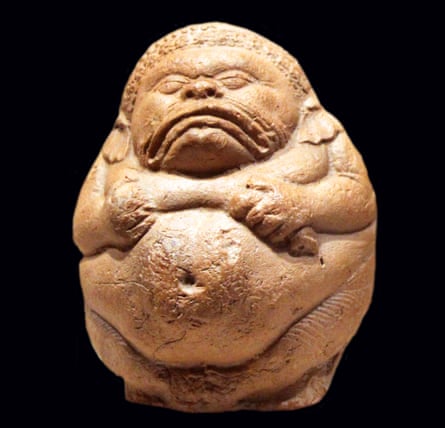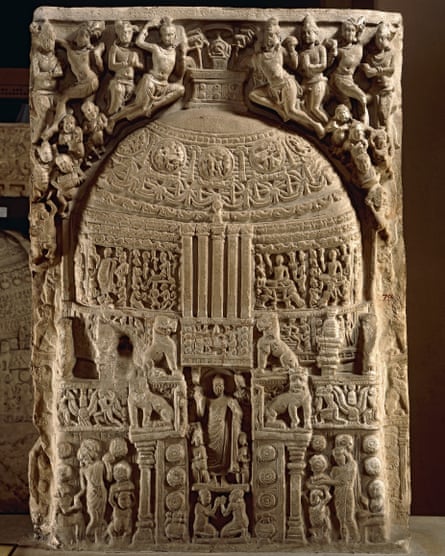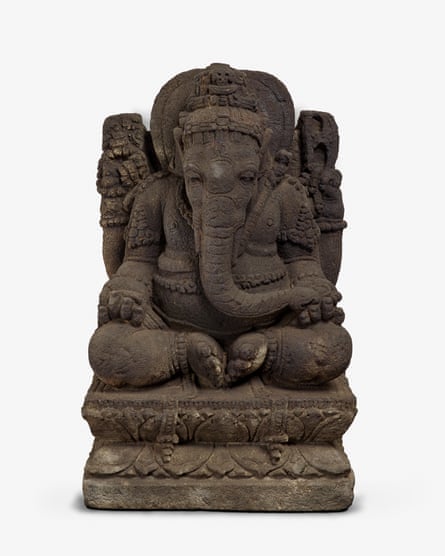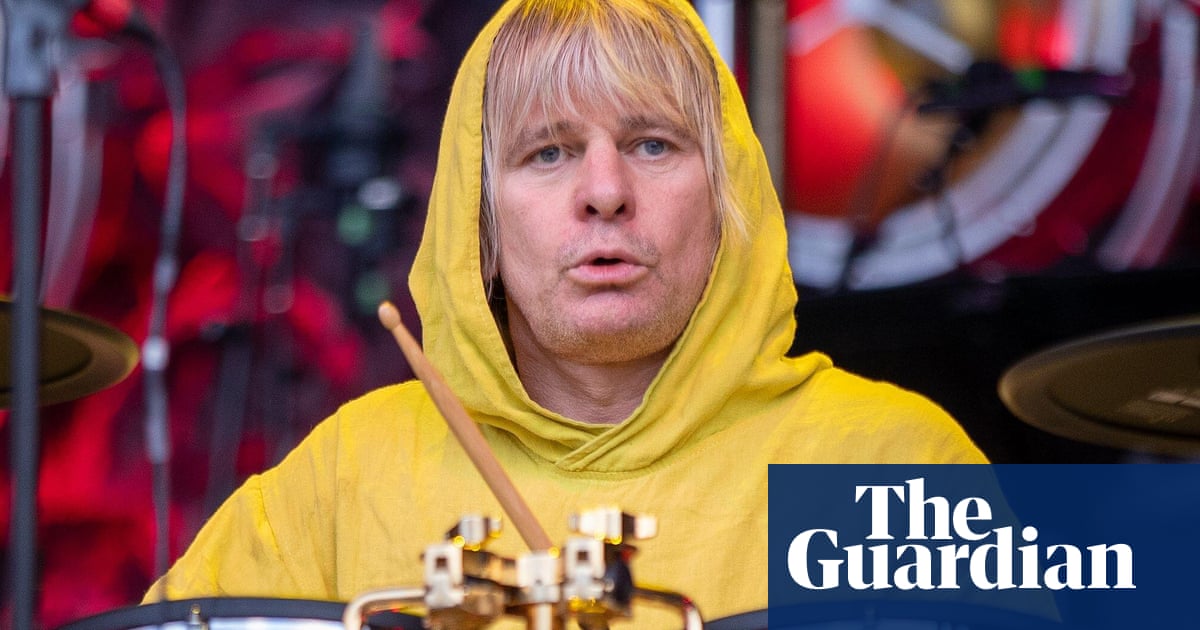About 2,000 years ago, Indian art went through a stunning transformation led, initially, by Buddhists. From being enigmatically abstract it became incredibly accomplished at portraying the human body – and soul.
You can see this happen in the bustling yet harmonious crowd of pilgrims and gift-givers you meet about a third of the way through this ethereal and sensual show. Two horses bearing courtiers or merchants are portrayed in perfect perspective, their rounded chests billowing, their bodies receding. Around them a crowd of travelling companions, on horseback and foot, are depicted with the same depth. Their bodies and faces are full of life, in a frenetic pageant, a bustling carnival, yet this human hubbub is composed with order and calm.

It’s a Buddhist masterpiece, which helps explain the inner harmony: one of a group of stunning reliefs in this show from the Great Stupa of Amaravati, excavated in the early 1800s by the East India Company and now owned by the British Museum. A stupa is a domed structure holding Buddhist or Jain relics, perhaps modelled on prehistoric mounds, but this one was embellished in the first century AD with sublime pictorial art. Buddha himself stands further along the slender stone block, taller and more still than everyone else.
The exact dates of Siddhartha Gautama, the teacher and seeker of enlightenment who became the Buddha, are unknown but by the time this work was created the movement he started was about 500 years old and spearheading one of the most influential renaissances in the story of world art. This exhibition gets to that artistic truth in an unlikely way. It doesn’t bother with the minutiae of stylistic change or dynastic history. Instead, it tells a passionate story about the three great religions of ancient India – Hinduism, Jainism and Buddhism – and their vitality across time. You meet practitioners of these faiths in Britain today, sharing their devotion on film. This is a wonderfully direct way to blast the museum dust off such ancient art – and when that dust clears, you get a much better sense of its living power.

Hindu and Jain beliefs are older than Buddhism (far older, in the case of Hinduism) but it was after the Buddhist breakthrough in storytelling art that they too became brilliantly figurative. Is it crude to see this as competition? It was at the very least a dialogue. At first I mistook a display of beautiful Jain statues for Bodhisattvas, Buddhist saints. In fact, the slender swaying grace of these figures embodies the ascetic Jain ideal of universal compassion.

Yet the biggest, most spectacular artistic transformation was achieved by Hinduism. You can’t get a friendlier, more paradoxically human deity than the elephant-headed Ganesha. A statue of him in this show, dating from about AD1100 to AD1200, is a technical miracle in the way the artist fuses an elephant’s head with a human body – both precisely observed. But it’s the pathos that gets you, the artist’s intuition of the wisdom and sensitivity of elephants. Ganesha here is not just divine but lovable.
Such moving, homely art is a long way from a black stone lingam, the older, aniconic Hindu representation of Shiva as a male tube being inserted into a female yoni. But sexual desire is a feeling too and the big difference between Christianity and the religions here is Indian sacred art’s embrace of the erotic. Statuettes and plaques that date from as early as 300BC depict Yaksis, female nature spirits, with jewellery on their curvy bodies and the same spherical, bulging breasts that you see throughout the show. Female sexual and reproductive power are celebrated simultaneously in the art of all three great religions. Another relief from the Great Stupa of Amaravati portrays The Birth of the Buddha. Its main character is Gautama’s mother, Queen Maha Maya. She lies on a bed in a curvy pose, and gives birth in a posture almost as luxuriant.
Growing up in a Protestant Christian church, I thought of religion as a taking away, a denial. Here it is an addition – human and elephant, spirit and body, dream and reality. Life infuses these religions: they don’t oppose themselves to it. That appetite for reality, as they attempt to make sense of the cosmos, mortality and desire, to find the dharma, must be what made India’s religions so exportable. Many of us don’t think of Buddhism as specifically Indian because it has spread so far so quickly. One of the most captivating works here is a silk painting of the Buddha set in a dreamworld of deep reds and greens, from a cave near Dunhuang, China, created in the eighth century AD. Nearby in the same final space is a statue of Ganesha from Java, one of the many places Hinduism took root.
This is an exhibition with a true sense of mystery. Not just in the atmospheric way it is lit with coloured misty veils separating displays, or even the marvels you encounter such as a nagini snake goddess floating in the shadows – but in the way it worships life.

 5 hours ago
6
5 hours ago
6

















































